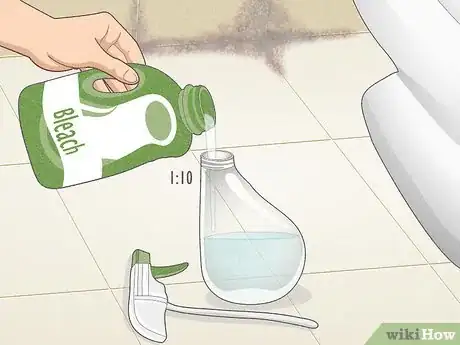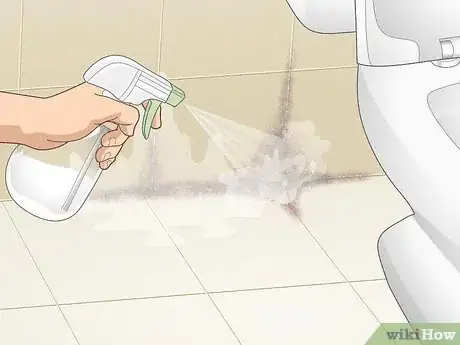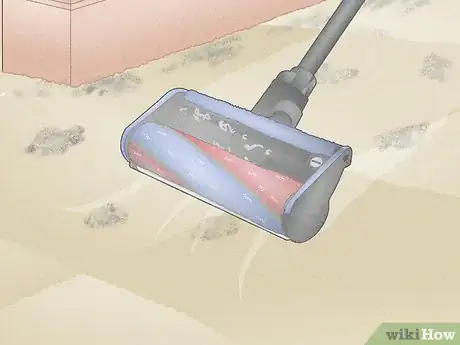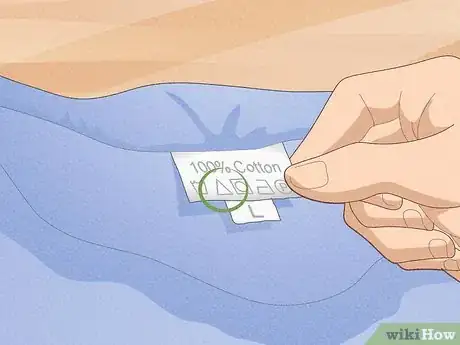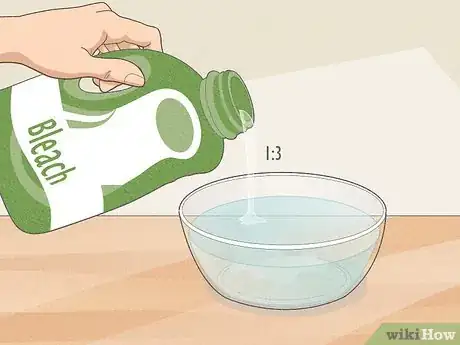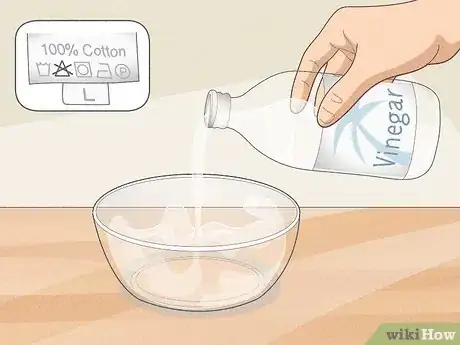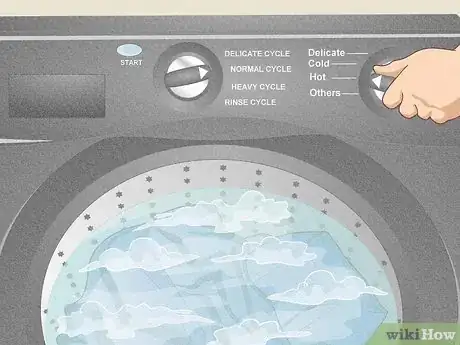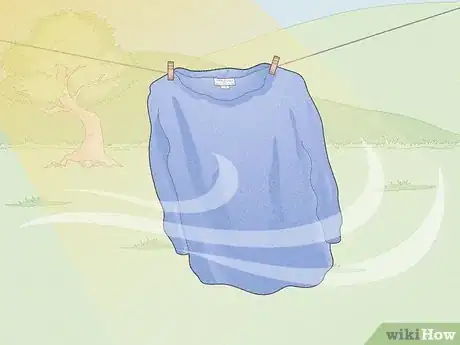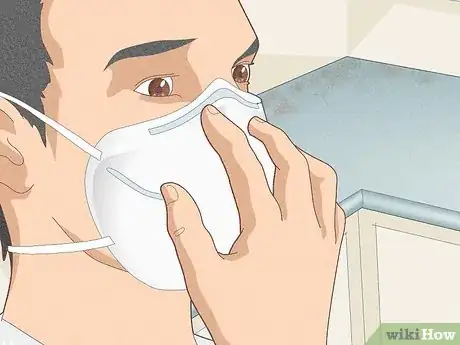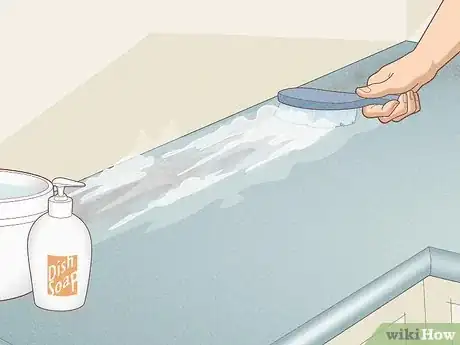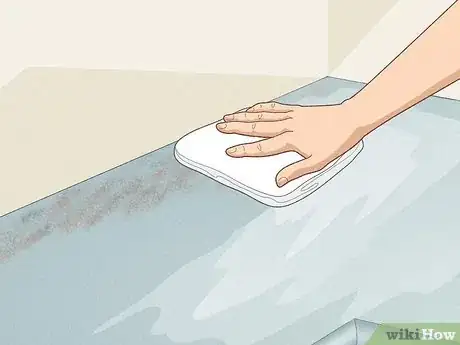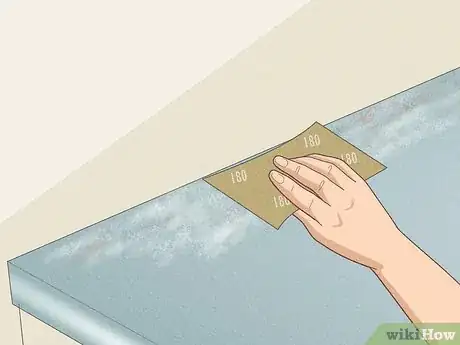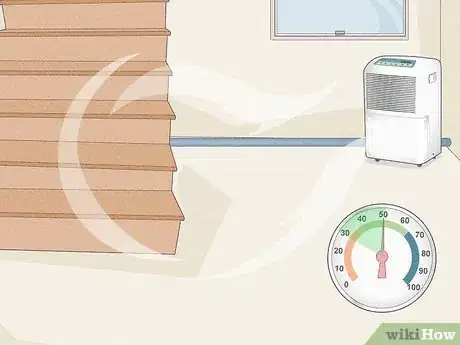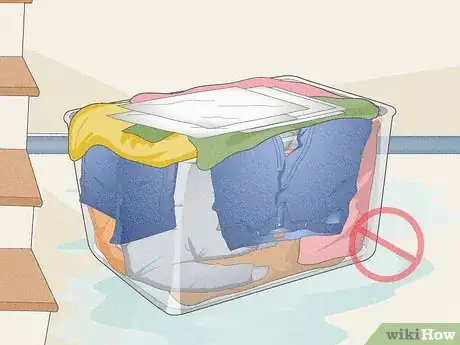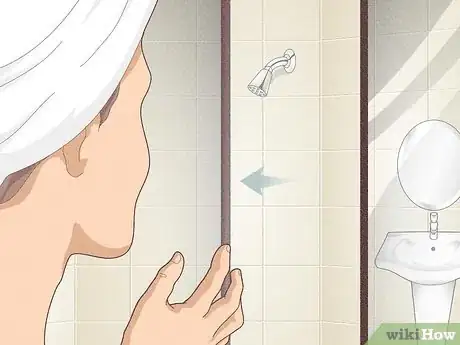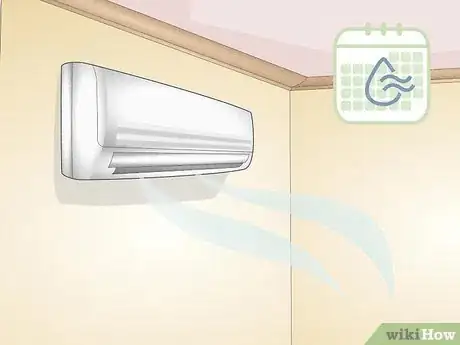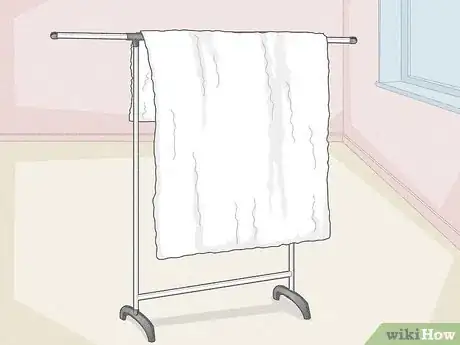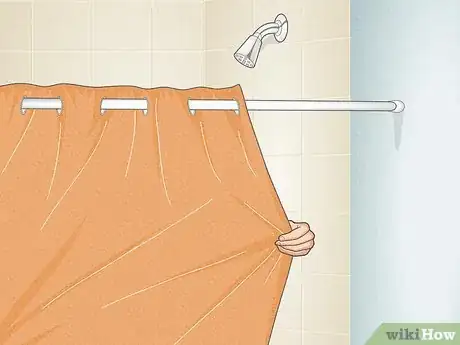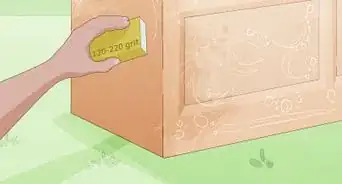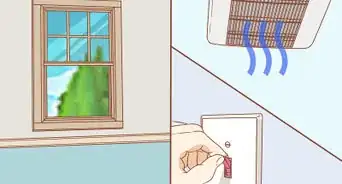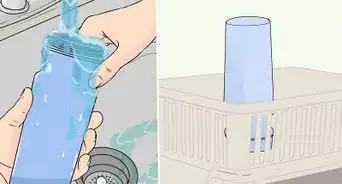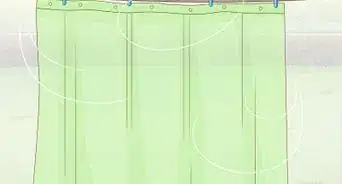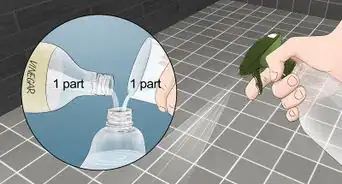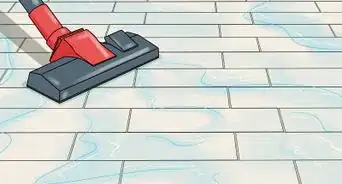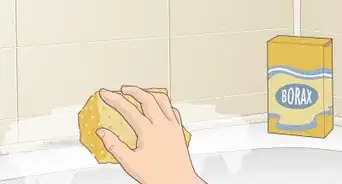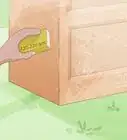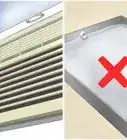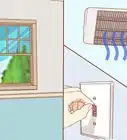This article was co-authored by Mike Kapur. Mike Kapur is a home inspector and the owner of Sonic Home Inspections, a home inspection company in Westchester, New York. With over 15 years of experience in pre-inspecting properties, Mike specializes in mold, radon, asbestos, lead, water, and air quality testing as well as hazardous materials, pest, infrared, and general home inspections. Prior to founding Sonic Home Inspections, Mike worked pre-inspecting apartments. Mike holds a BS in Accounting from Queens College and is a Certified Mold Assessor in the state of New York.
There are 11 references cited in this article, which can be found at the bottom of the page.
This article has been viewed 195,235 times.
Along with being unsightly and unpleasant to smell, mildew can also lead to health issues.[1] The black spots and the musty smell of the mold thrive in dark and damp areas. Bathrooms, stored wood furniture, and fabrics that have been left damp for an extended length of time are often victims to mildew growth. Learning how to control mildew and prevent mildew growth is key in any home. Follow some of the simple steps below to get rid of mildew in your home.
Steps
Removing Mildew from Bathroom Surfaces
-
1Combine 1 part bleach with 10 parts water in a spray bottle.[2] Bleach is a highly effective mold and mildew killer, but it needs to be diluted with enough water to make it safe to use on surfaces and prevent toxic fumes that could make you ill. Carefully add the bleach to your bottle, then pour the water and shake it up well to mix it all together into a cleaning solution.[3]
- Mildew is a generic term that refers to mold growth, especially mold that grows on shower walls or bathtubs.
- Bleach is great to use on tile, grout, and other hard surfaces in your bathroom such as your sink, shower, or bathtub.
- You can find spray bottles at your local department store or by ordering them online.
- If you don’t have or you don’t want to use a spray bottle, you can mix the bleach and water together in a bucket. Just be careful not to breathe in the fumes.
- For example, you can combine 1 cup (240 mL) of bleach with 10 cups (2,400 mL) of water to dilute it.
-
2Use distilled white vinegar for a natural alternative.[4] Bleach is a harsh industrial chemical, so go with white vinegar if you’re looking for a more natural and environmentally-friendly cleaner. Use pure, distilled white vinegar so there won’t be any stains or strong odors left behind. Add the vinegar to your spray bottle without diluting it with water.[5]
- White vinegar doesn’t give off toxic fumes that could harm you.
Alternative: Another natural alternative you can use to get rid of mildew is hydrogen peroxide. Mix together equal parts 3% peroxide and water in a spray bottle.[6]
Advertisement -
3Spray the mildew with the cleaning solution. Apply the cleaner liberally over all of the areas with mildew. Make sure it’s well saturated and you’ve covered all of the affected areas so the mildew doesn’t get a chance to grow back.[7]
- Spray nonporous surfaces such as sinks, tubs, toilets, and showers, but don’t spray ceilings or non-tiled walls.
- Don’t spray the bleach onto dyed fabrics or it will discolor them.
- Pay extra attention to cracks and crevices, where mildew likes to hide.
- You can’t really overdo it. Spray down the mildew so it’s fully soaked.
-
4Allow the cleaning solution to air dry and kill the mildew. Once you apply the cleaner, leave it alone to get rid of the mildew and air dry without rinsing or wiping it away. The cleaning solution will leave behind a film that will make it difficult for the mildew to come back, so you don’t want to wash it away.[8]
- Make sure the area is well-ventilated so the fumes don’t build up and the cleaner dries more quickly.
- The liquid should evaporate away after about 10-15 minutes.
- If the mildew is still present after the solution dries, apply more and let it dry again.
Getting Mildew off of Carpet and Upholstery
-
1Vacuum the area to suck up loose spores. Remove the loose and large particles of mildew spores using a vacuum cleaner extension, which will help keep them from flying in the air and spreading when you clean the surface of the carpet or upholstery. Empty the vacuum cleaner in the garbage when you’re finished so the spores don’t collect inside of it.[9]
- Vacuuming won’t remove all of the mildew, but it helps prevent the spread.
Note: If you have a vacuum cleaner that uses a bag, replace the bag after you vacuum over the mildew.
-
2Mix together 1 cup (200 g) of Borax and 1 gallon (3.8 L) of water. Borax is a non-toxic cleaner that works an abrasive that will both kill and remove the mildew. Add the Borax to a bucket or container, then slowly pour in the water to keep the powder from spreading in the air. Use a spoon or utensil to mix together the cleaning solution.[10]
- Borax is available in many locations such as hardware stores, home improvement stores, and the cleaning aisle at your local department store. You can also order it online.
-
3Apply the solution to the mildew and scrub it with a scrubbing brush. Pour a small amount of the solution over the areas with mildew so it’s fully soaked in it. Take a scrubbing brush and gently scrub the mildew away to remove it. Add more cleaning solution as you need it.[11]
- You could also use a sponge with a scrubbing surface.
- Don’t use a wire brush or you may damage the fibers of the carpet or upholstery.
- Borax is safe to use on colored carpet and upholstery as well.
Cleaning Mildew off of Clothes
-
1Check the tag to make sure the clothes can be bleached. Bleach is an effective mildew killer, but it can damage and discolor some fabrics. Find the tag on the clothing item and read it to see if the fabric is bleach safe. If the item can’t be bleached, use a natural cleaner such as white vinegar.[12]
- If you can’t find a tag, try looking up the item online to see if it’s safe.
- You may want to go with a natural cleaner if you’re unsure or worried that the bleach will damage your clothes.
-
2Mix together 1 part bleach with 3 parts water in a container. Use a bucket or a bowl to make your cleaning solution. Add the bleach and dilute it with about 3 parts of water so it won’t damage or discolor the fabric of your clothes. Use a spoon or another utensil to stir the mixture so it’s fully combined.[13]
- Be careful not to breathe in the toxic fumes of the bleach as you pour it into the container.
- If you get some bleach on your skin, rinse it off with cool water.
-
3Use white vinegar if the clothes can’t be bleached. If you’re looking for a more natural, environmentally-friendly option, or your clothes aren’t able to be bleached, distilled white vinegar is an effective mildew killer. Simply add the vinegar to a container, there’s no need to dilute it.[14]
-
4Apply the cleaning solution to the mildew with a cotton pad and wait 5 minutes. Dip a cotton pad or a clean cloth into the cleaning solution and wring out the excess. Apply the liquid directly to any mildew on your clothes. Make sure you get all of the areas with mildew. Wait a few minutes to let the solution kill the mildew.[15]
- The solution will begin to kill the mildew almost instantly, but there may still be a stain on your clothes.
-
5Wash the clothes on a hot water cycle in your washing machine. To get the mildew off of your clothes and remove any stains left behind, run it through your washing machine with detergent. Use the hottest water setting your machine has to sanitize and help remove all of the mildew.[16]
- You can use your standard laundry detergent to wash your clothes.
Tip: If you have especially stubborn mildew stains, run your clothes through your washing machine twice.
-
6Hang the fabric on a clothesline in the sun to air dry. Sunlight naturally kills mildew, so find a sunny spot and string up your clothes so they’re in the direct light. Wait a few hours, or until the clothes are fully dry before you take them down so the light has a chance to kill off any remaining mildew spores.[17]
- If the clothes are still damp to the touch, leave them to keep drying.
- Don’t store the clothes if they’re still damp or the mildew may return.
Scrubbing and Sanding Wood and Walls
-
1Put on a face mask to keep from breathing in the mildew. Scrubbing mildew off of wood, walls, or other hard surfaces can cause the spores to release in the air. To prevent accidentally breathing them in, put on a face mask that covers your mouth and nose.[18]
- Some mildew, such as black mold, could make you really ill if you breathe it in.
Tip: You could also tie a bandana or a shirt around your head to cover your mouth and nose.
-
2Vacuum over the mildew with a soft brush attachment. Fit the brush attachment onto your vacuum cleaner and use it to help break up the mildew as you vacuum over it. Vacuum all around the areas with mildew to suck up the larger particles.[19]
- Mildew likes to cling to the surface of wood, so the brush attachment is a good way to help dislodge the larger particles.
- The brush attachment will else help break up large patches of mildew on painted walls.
- Be sure to dispose of the mildew you vacuum up in a sealed garbage bag so it doesn’t spread.
-
3Scrub the mildew with soap and water and a stiff-bristled brush. Fill a bucket or a large bowl with warm water. Add a few drops of dish soap and combine it well so it’s nice and soapy. Use a stiff-bristled brush or a sponge with a scrubbing pad to scrub off the mildew from the surface of the wood.[20]
- Add more soapy water to the wood as you need it.
- Use warm water to help the soap combine with it.
-
4Dry the area with a towel. Leaving water on the wood can warp it and affect the finish, so as soon as you’re doing scrubbing it, take a clean cloth or towel and dry the surface. Try to soak up as much of the moisture as you can.[21]
-
5Sand the mildew stain away with 180-grit sandpaper if it’s necessary. If you have really stubborn mildew stains on wood or painted walls, take some sandpaper or an electric sander and gently sand the surface to remove it.[22] Be careful not to sand so much that you stain or discolor it, but if you need to remove a mildew stain that soap and water won’t get rid of, sanding will do the trick.[23]
- If you sand so much that it damages the paint or finish, try blending it back by adding paint, polish, or wood finish.
Preventing Mildew
-
1Keep your humidity levels between 30-50% to stop build-up.[24] Mildew loves moisture, so keeping your humidity levels low will help keep the spores from collecting and developing. If you live in an especially humid area, use a dehumidifier to keep the levels low in your home.[25]
- You can check your local weather report to find out the outdoor humidity level.
Tip: Check your thermostat or use a hygrometer, which is like a thermometer for humidity, to find out the humidity level in your home.
-
2Avoid storing fabrics or paper in damp locations. Damp basements, attics, or closets are like a dream-come-true for mildew, so keep your items that can easily develop mildew away from those areas. Items such as books, clothes, upholstery, and furniture can easily collect spores and develop mildew.[26]
- Never fold and store damp clothes, either. They can easily collect mildew.
-
3Open your bathroom door after you shower to let out the moisture. Bathrooms easily develop mildew because they’re often exposed to high levels of moisture from your shower, so leave your door open whenever you’re finished. The extra circulation will allow the moisture to escape and help prevent mildew.[27]
- You could also turn on a vent or open up a window to increase airflow even more.
-
4Use an air conditioner during humid months. Hot summer months come with an increased humidity level, so turn on your air-conditioner to both cool down your home and filter out the excess moisture from the air. The cooler and dryer the area, the less of a chance mildew has to settle in and develop.[28]
-
5Spread your towels out after you use them so they dry more quickly. After you take a bath or shower, place your towel on a towel rack, and spread it out so there aren’t any folds or creases. Spreading your towel out helps it dry faster and also helps prevent mildew from collecting in the folds and fibers.[29]
- If your towel starts to smell, wash it in your washing machine.
-
6Choose shower curtains that dry quickly to prevent mildew. Your shower curtain is exposed to water often, making it especially susceptible to mildew. Go with plastic shower curtains or curtains designed to prevent mildew and soap residue buildup.[30]
- Check the packaging to see if the shower curtain is designed to resist mildew.
- Cloth or fabric shower curtains need to be washed every few weeks to keep mildew from developing.
-
7Increase circulation throughout your home. Open up doors between rooms, move furniture away from your walls, and open up closet doors to let fresh air circulate around your home. Improving air-flow and circulation will help keep mildew from developing.[31]
- Turn on fans and open up some windows if the weather is nice.
Expert Q&A
Did you know you can get expert answers for this article?
Unlock expert answers by supporting wikiHow
-
QuestionWhat causes mildew?
 Mike KapurMike Kapur is a home inspector and the owner of Sonic Home Inspections, a home inspection company in Westchester, New York. With over 15 years of experience in pre-inspecting properties, Mike specializes in mold, radon, asbestos, lead, water, and air quality testing as well as hazardous materials, pest, infrared, and general home inspections. Prior to founding Sonic Home Inspections, Mike worked pre-inspecting apartments. Mike holds a BS in Accounting from Queens College and is a Certified Mold Assessor in the state of New York.
Mike KapurMike Kapur is a home inspector and the owner of Sonic Home Inspections, a home inspection company in Westchester, New York. With over 15 years of experience in pre-inspecting properties, Mike specializes in mold, radon, asbestos, lead, water, and air quality testing as well as hazardous materials, pest, infrared, and general home inspections. Prior to founding Sonic Home Inspections, Mike worked pre-inspecting apartments. Mike holds a BS in Accounting from Queens College and is a Certified Mold Assessor in the state of New York.
Certified Mold Assessor & Home Inspector, Sonic Home Inspections
-
QuestionWhat is a good humidity level for indoors?
 Mike KapurMike Kapur is a home inspector and the owner of Sonic Home Inspections, a home inspection company in Westchester, New York. With over 15 years of experience in pre-inspecting properties, Mike specializes in mold, radon, asbestos, lead, water, and air quality testing as well as hazardous materials, pest, infrared, and general home inspections. Prior to founding Sonic Home Inspections, Mike worked pre-inspecting apartments. Mike holds a BS in Accounting from Queens College and is a Certified Mold Assessor in the state of New York.
Mike KapurMike Kapur is a home inspector and the owner of Sonic Home Inspections, a home inspection company in Westchester, New York. With over 15 years of experience in pre-inspecting properties, Mike specializes in mold, radon, asbestos, lead, water, and air quality testing as well as hazardous materials, pest, infrared, and general home inspections. Prior to founding Sonic Home Inspections, Mike worked pre-inspecting apartments. Mike holds a BS in Accounting from Queens College and is a Certified Mold Assessor in the state of New York.
Certified Mold Assessor & Home Inspector, Sonic Home Inspections
-
QuestionHow do you remove mildew from walls?
 Mike KapurMike Kapur is a home inspector and the owner of Sonic Home Inspections, a home inspection company in Westchester, New York. With over 15 years of experience in pre-inspecting properties, Mike specializes in mold, radon, asbestos, lead, water, and air quality testing as well as hazardous materials, pest, infrared, and general home inspections. Prior to founding Sonic Home Inspections, Mike worked pre-inspecting apartments. Mike holds a BS in Accounting from Queens College and is a Certified Mold Assessor in the state of New York.
Mike KapurMike Kapur is a home inspector and the owner of Sonic Home Inspections, a home inspection company in Westchester, New York. With over 15 years of experience in pre-inspecting properties, Mike specializes in mold, radon, asbestos, lead, water, and air quality testing as well as hazardous materials, pest, infrared, and general home inspections. Prior to founding Sonic Home Inspections, Mike worked pre-inspecting apartments. Mike holds a BS in Accounting from Queens College and is a Certified Mold Assessor in the state of New York.
Certified Mold Assessor & Home Inspector, Sonic Home Inspections
Warnings
- Avoid breathing in the fumes from bleach, which can make you dizzy and ill.⧼thumbs_response⧽
Things You’ll Need
Removing Bathroom Mildew
- Bleach or white vinegar
- Spray bottle
Getting Mildew off of Carpet and Upholstery
- Vacuum cleaner
- Borax
- Scrubbing brush
Cleaning Mildew off of Clothes
- Bleach or white vinegar
- Cotton pad
- Laundry detergent
Scrubbing and Sanding Hard Surfaces
- Face mask
- Vacuum cleaner
- Dish soap
- Stiff-bristled brush
- Towel
- 180-grit sandpaper (if necessary)
References
- ↑ https://www.cdc.gov/mold/faqs.htm
- ↑ Mike Kapur. Certified Mold Assessor & Home Inspector, Sonic Home Inspections. Expert Interview. 19 August 2020.
- ↑ https://www.bhg.com/homekeeping/cleaning-and-care/cleaning-advice/how-to-clean-bathroom-mold/
- ↑ Mike Kapur. Certified Mold Assessor & Home Inspector, Sonic Home Inspections. Expert Interview. 19 August 2020.
- ↑ https://www.bhg.com/homekeeping/cleaning-and-care/cleaning-advice/how-to-clean-bathroom-mold/
- ↑ https://youtu.be/9lsX6zHxSto?t=19
- ↑ https://www.bobvila.com/articles/mold-on-the-walls/
- ↑ https://www.bobvila.com/articles/mold-on-the-walls/
- ↑ https://extension2.missouri.edu/gh5928
- ↑ https://www.bhg.com/homekeeping/cleaning-and-care/cleaning-advice/how-to-clean-bathroom-mold/
- ↑ https://www.bhg.com/homekeeping/cleaning-and-care/cleaning-advice/how-to-clean-bathroom-mold/
- ↑ https://www.goodhousekeeping.com/home/cleaning/a24670/3-secrets-to-keeping-your-whites-white/
- ↑ https://www.today.com/home/how-remove-mold-mildew-anything-everything-t108127
- ↑ https://www.today.com/home/how-remove-mold-mildew-anything-everything-t108127
- ↑ https://www.today.com/home/how-remove-mold-mildew-anything-everything-t108127
- ↑ https://www.today.com/home/how-remove-mold-mildew-anything-everything-t108127
- ↑ https://www.today.com/home/how-remove-mold-mildew-anything-everything-t108127
- ↑ https://www.bobvila.com/articles/how-to-remove-mold-from-wood/
- ↑ https://www.goodhousekeeping.com/home/cleaning/tips/a22126/prevent-mildew/
- ↑ https://www.bobvila.com/articles/how-to-remove-mold-from-wood/
- ↑ https://www.goodhousekeeping.com/home/cleaning/tips/a22126/prevent-mildew/
- ↑ Mike Kapur. Certified Mold Assessor & Home Inspector, Sonic Home Inspections. Expert Interview. 19 August 2020.
- ↑ https://www.bobvila.com/articles/how-to-remove-mold-from-wood/
- ↑ Mike Kapur. Certified Mold Assessor & Home Inspector, Sonic Home Inspections. Expert Interview. 19 August 2020.
- ↑ https://www.cdc.gov/mold/faqs.htm
- ↑ https://extension2.missouri.edu/gh5928
- ↑ https://www.goodhousekeeping.com/home/cleaning/tips/a22126/prevent-mildew/
- ↑ https://www.cdc.gov/mold/faqs.htm
- ↑ https://www.bhg.com/homekeeping/house-cleaning/tips/how-to-prevent-mold-and-mildew/
- ↑ https://www.bhg.com/homekeeping/house-cleaning/tips/how-to-prevent-mold-and-mildew/
- ↑ https://extension2.missouri.edu/gh5928
About This Article
To get rid of mildew in your bathroom, scrub the mildew with diluted chlorine bleach. Let the diluted bleach sit on the mildew for a few minutes and then rinse it off with water. If you've found mildew on fabric, rinse the fabric with water and hang it up outside in direct sunlight. Then, use a wire brush to brush off the mildew spores. Once the fabric is completely dry, soak it in fabric bleach for 30 minutes before machine washing it. If you want to learn how to clean mildew off of wooden furniture, keep reading the article!
